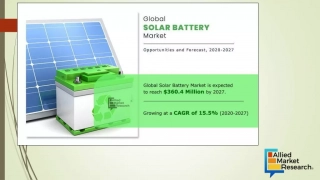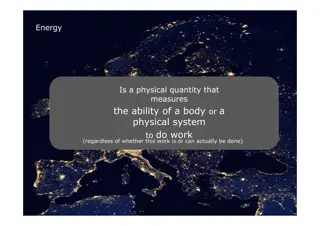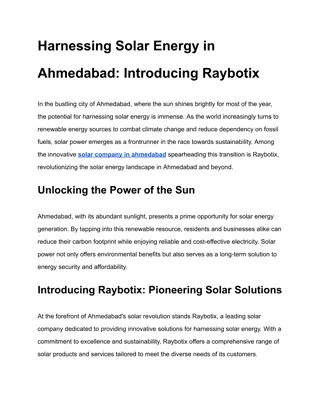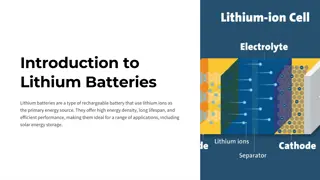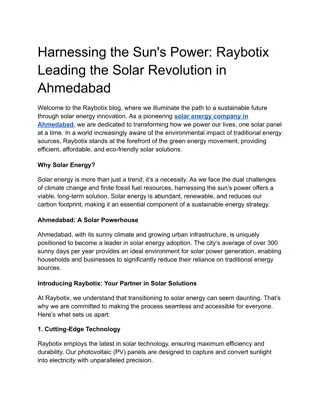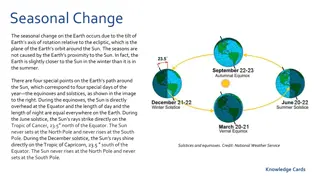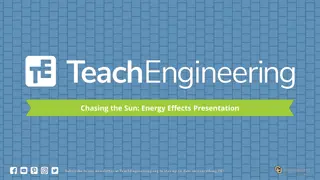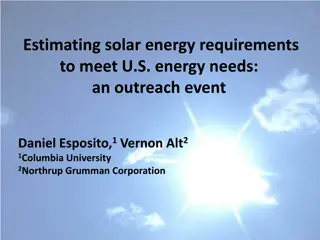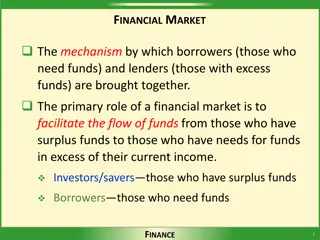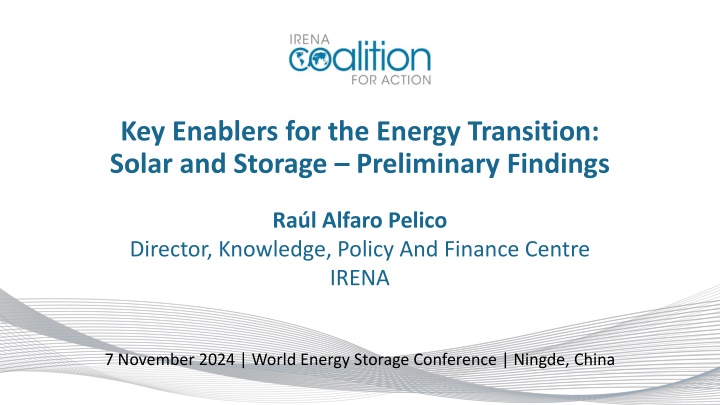
Key Enablers for Energy Transition: Solar and Storage in Global Markets
The preliminary findings from the World Energy Storage Conference highlight the growth of renewable energy, with solar accounting for a significant portion. Policy recommendations focus on accelerating deployment, enhancing grid flexibility, and supporting industry standards and certifications.
Download Presentation

Please find below an Image/Link to download the presentation.
The content on the website is provided AS IS for your information and personal use only. It may not be sold, licensed, or shared on other websites without obtaining consent from the author. If you encounter any issues during the download, it is possible that the publisher has removed the file from their server.
You are allowed to download the files provided on this website for personal or commercial use, subject to the condition that they are used lawfully. All files are the property of their respective owners.
The content on the website is provided AS IS for your information and personal use only. It may not be sold, licensed, or shared on other websites without obtaining consent from the author.
E N D
Presentation Transcript
Key Enablers for the Energy Transition: Solar and Storage Preliminary Findings Ra l Alfaro Pelico Director, Knowledge, Policy And Finance Centre IRENA 7 November 2024 | World Energy Storage Conference | Ningde, China
Solar PV & Storage Landscape Conducive policies, geopolitical developments and falling costs, have driven renewable energy growth. Renewable capacity of 473 GW added in 2023, accounting for 87% of newly installed capacity. Solar energy accounted for 73% of this growth. Global battery storage capacity reached 86 GW in 2023. IRENA (2024), Renewable energy statistics 2024, International Renewable Energy Agency, Abu Dhabi. IRENA (2024), Renewable power generation costs in 2023, International Renewable Energy Agency, Abu Dhabi. IRENA, COP28, COP29, GRA, MoEA and Government of Brazil (2024), Delivering on the UAE Consensus: Tracking progress toward tripling renewable energy capacity and doubling energy efficiency by 2030, International Renewable Energy Agency, COP28 Presidency, COP29 Presidency, Ministry of Energy of the Republic of Azerbaijan, and Government of Brazil, Abu Dhabi.
3 Enablers For Accelerating Deployment Policies and Incentives: 1. Operation within the energy market 2. Pricing mechanisms, where policies and financial incentives need to provide investment signals, sustainable business models and market mechanisms 3. Insurance and financing Storage in Grid Expansion and Modernisation Plans: 1. Energy storage must be factored into the planning and deployment of the grid 2. Flexibility and the way storage provides this will be a key driver of the energy transition 3. Digitalization will also play a key role; by forecasting we can assess the demand for flexibility Standards and Certification: 1.For the Solar PV industry, standards and certifications exist extensively, 2.For storage, standards and certification at the system- and grid-level are lacking, 3.Need for grid-forming converter standards, which is becoming increasingly relevant as more VRE is added to the grid.
4 Policy Recommendation Pillars Develop solar and storage through favourable financing and insurance policies Promote solar and storage as key enablers for the global tripling target Enhance grid flexibility and stability via energy storage Support the development of standards and certifications
Policy Recommendations: Pillar 1 Adopt national energy storage targets A call for solar and storage as a key enabler for the global tripling target Provide long-term revenue viability to the energy storage industry Develop an action plan to address skilled labour shortages
Policy Recommendations: Pillar 2 Establish country level commitments on storage based on supply and demand forecasts Improve and fully develop the regulatory framework for grid and energy storage integration Enhance grid flexibility and stability via energy storage Introduce mechanisms to secure investments needed to reach energy storage targets Enhance capacity of grid-forming solutions
Policy Recommendations: Pillar 3 Develop solar and storage through favourable financing and insurance policies Introduce diversified financial mechanisms Ensure favourable insurance policies
Policy Recommendation: Pillar 4 Encourage participation, compliance and implementation Design systematic technologies to support the development of standards Support the Development of Certification and Standards Establish sound safety evaluation standards Promote supply chain compliance and diversification Conduct life-cycle safety assessment of energy storage systems
SCAN FOR THE REPORT


